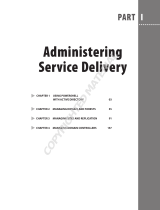
Table 4. List of available BIOS settings (continued)
Item name Selection name Load default?
ParallelPortMode ″OutputOnly″,″BiDirectional″, ″ECP″ Y
ParallelPortIO “378”, “278”, “3BC” Y
ParallelPortIRQ “5”, “7” Y
ParallelPortDMA "0”, “1”, “3” Y
PCIINTA “Disable”, “Auto Select”, “3”, “4”, “5”, “6”,
“7”, “9”, “10”, “11”
Y
PCIINTB “Disable”, “Auto Select”, “3”, “4”, “5”, “6”,
“7”, “9”, “10”, “11”
Y
PCIINTC “Disable”, “Auto Select”, “3”, “4”, “5”, “6”,
“7”, “9”, “10”, “11”
Y
PCIINTD “Disable”, “Auto Select”, “3”, “4”, “5”, “6”,
“7”, “9”, “10”, “11”
Y
PCIINTE “Disable”, “Auto Select”, “3”, “4”, “5”, “6”,
“7”, “9”, “10”, “11”
Y
PCIINTF “Disable”, “Auto Select”, “3”, “4”, “5”, “6”,
“7”, “9”, “10”, “11”
Y
PCIINTG “Disable”, “Auto Select”, “3”, “4”, “5”, “6”,
“7”, “9”, “10”, “11”
Y
PCIINTH “Disable”, “Auto Select”, “3”, “4”, “5”, “6”,
“7”, “9”, “10”, “11”
Y
USBBIOSSupport “Enable”, ”Disable” Y
AlwaysOnUSB “Enable”, ”Disable” Y
TrackPoint “Disable”, “Automatic” Y
TouchPad “Disable”, “Automatic” Y
FnKeyLock “Enable”, ”Disable” Y
ThinkPadNumLock “Independent”, “Synchronized” Y
PowerOnNumLock “Auto”, “On”, “Off” Y
PrimaryVideo “PCIExpress”, “Internal” Y
BootDisplayDevice “LCD”, “VGA”, “DisplayPort”, ”DVI” Y
GraphicsDevice ″IntegratedGfx″,″DiscreteGfx″,
″SwitchableGfx″
Y
OsDetectionForSwitchableGraphics Enable”, ”Disable Y
TimerWakeWithBattery “Enable”, ”Disable” Y
SpeedStep “Enable”, ”Disable” Y
SpeedStepModeAC “MaximumPerformance”,
“BatteryOptimized”, “MaximumBattery”,
“Automatic”
Y
SpeedStepModeBattery “MaximumPerformance”,
“BatteryOptimized”, “MaximumBattery”,
“Automatic”
Y
AdaptiveThermalManagementAC “MaximizePerformance”, “Balanced” Y
AdaptiveThermalManagementBattery “MaximizePerformance”, “Balanced” Y
CDRomSpeed “High”, “Normal”, “Silent” Y
CPUPowerManagement “Disable”, ”Automatic” Y
Chapter 2. Script classes and parameters 5




















